Recover Unsaved Excel File Windows 10
Featured Articles
- Fix Excel Cannot Open The File Because the Extension Is Not Valid on Windows [5 Fixes]
- Fix Excel Cannot Open The File Because the Extension Is Not Valid on Mac [3 Fixes]
- How to Recover Excel File When the File Format or File Extension Is Not Valid
- Important Tips: How to Prevent Excel Files from Getting Loss
Excel Cannot Open The File Issue Overview
The file format of an Excel worksheet is .xlsx or .xls. Whenever the user opens any file, it is opened with the same extension. However, some users may encounter errors when opening or editing an Excel file in Office 2003, 2007, 2010, 2013, 2016, 2019, and 365. The error message reads, "Excel cannot open the file because the extension is not valid".
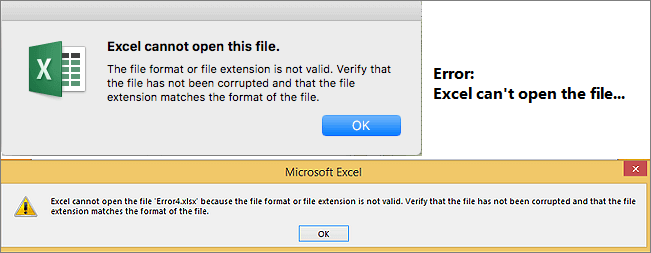
This article will provide comprehensive solutions to resolve the Excel cannot open the file error.
How to Fix Excel Cannot Open the File Because the Extension Is Not Valid on Windows [5 Fixes]
Here, we will show you all the possible solutions, and you can try these until your issue is fixed. Here are three useful solutions for the Excel cannot open file problem.
| 🔧Use the EaseUS File Repair Tool | This method suits users who encounter errors when opening an Excel file due to corruption or damage. |
| 📛Change the Excel File Extension | This method tricks Excel into recognizing the file as a valid format and allows it to be opened. |
| ✅Get Permission to Access | You can add file permission for the unopened Excel file to fix the issue. |
| ⭐Use Open and Repair Feature | This method is suitable for users who encounter issues with specific Excel files and want to try repairing them using Excel's native functionality. |
| 📒Recover Unsaved Workbook | When you cannot open Excel or close Excel files without saving changes, you can use this method. |
Fix 1. Use the EaseUS File Repair Tool
If the "Excel cannot open the file because the extension is not valid" problem is caused by corrupt Excel files and not by file compatibility, you need a professional file repair program to help you fix the problem. EaseUS Fixo Document Repair is an all-in-one tool that can help with corrupted file repair easily and efficiently. You can download this software now and get the trial version.
This handy tool can help resolve multiple file corruption issues. You can check the following information to learn more about EaseUS Fixo:
- It is one of the best Excel repair tools, and it can help you quickly repair corrupted Excel files.
- Also, a good Word repair tool that solves the problem of Word won't open or open with blank pages.
- Good at solving PDF issues such as opening 0kb PDF files, opening damaged PDF files, etc.
After downloading the EaseUS Fixo repair tool, follow the step-by-step guides below to repair damaged Excel files in three steps:
Step 1. Launch EaseUS Fixo Document Repair by double-clicking it. Choose "File Repair" and add any non-open Excel files to repair.
Step 2. After selecting all the Excel files needing repair, click "Repair All" to start the repair process.
Step 3. You can preview the repaired Excel files and click "Save All" to save them to the default folder.
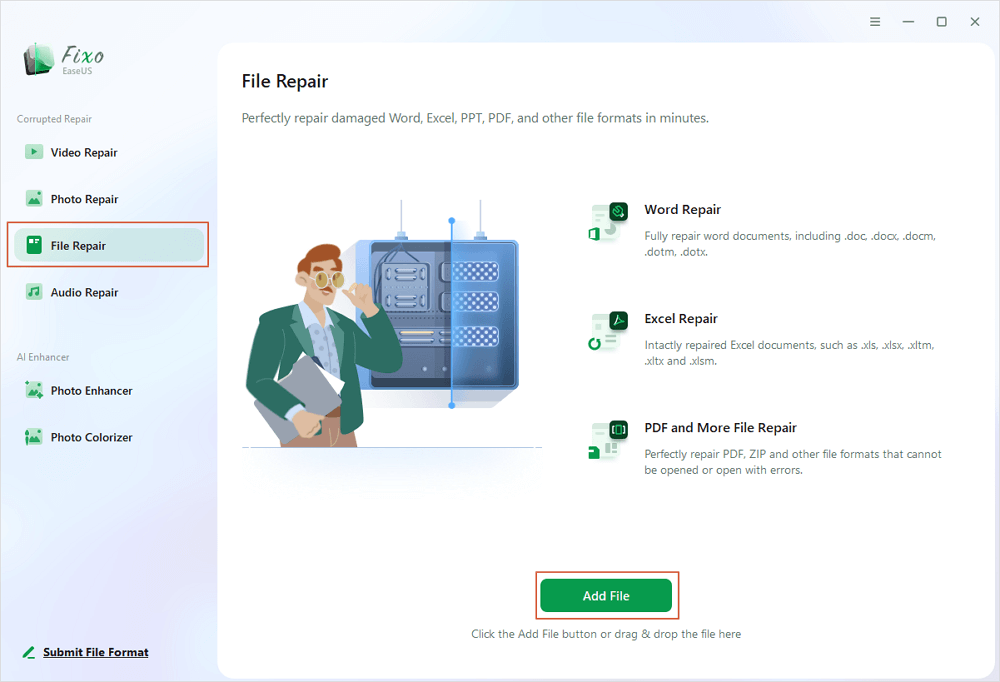
EaseUS Fixo is easy to use and safe. You can click the following sharing buttons to let more readers know about Fixo!
Before you follow the system solutions, check if Excel is working normally.
Step 1. Press the Windows+R keys, type excel.exe /safe, and click "OK". Loading Excel without templates and add-ins allows you to see if the program works as it should or if it is corrupted.
Step 2. If Excel opens normally, check for any add-ins that are causing problems in Excel. Disable the add-ins and click on the "OK" button. Then, restart Excel to check if the problem is fixed. If not, move on to the fixes below. When your Excel is running slow, you can use this method to quickly fix the issue by removing the add-ins.
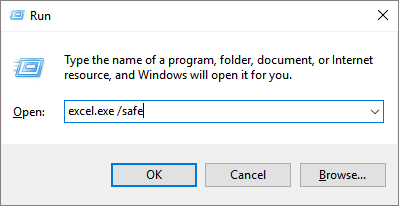
We have full solutions to help you solve Excel. We cannot open the file because the extension is not a valid issue in this post. In the beginning, you can watch a video tutorial to troubleshoot corrupted Excel files. The key moments in this video are as follows:
- 00:05 Introduction
- 00:26 Method 1. Repair Corrupted Excel Files with EaseUS Fixo Document Repair
- 01:34 Method 2. Repair Excel Files with Open and Repair Option
- 02:12 Method 3. Repair Damaged Excel Files by Changing File Extension

Fix 2. Change the Excel File Extension to Fix Excel Cannot Open the File
Many times, this error occurs due to the incompatible file extension of the Excel file. MS Excel saves Excel workbooks as XLSX or XLS files by default. Excel 2003 and earlier versions save files as XLS, whereas Excel 2007 and later versions like Excel 2010, Excel 2013, Excel 2016, and 2019 save files in XLSX file format. You can change the default file format for the corresponding Excel version to any other file format supported by MS Excel.
Step 1. Open Microsoft Excel and go to the "File" tab.
Step 2. Click "Export" and choose "Change File Type".
Step 3. Change the file extension to any other file format that MS Excel supports and click "Save As" (Excel not saving changes? Quick tips are here). Then, Check whether Excel can open your file or not.
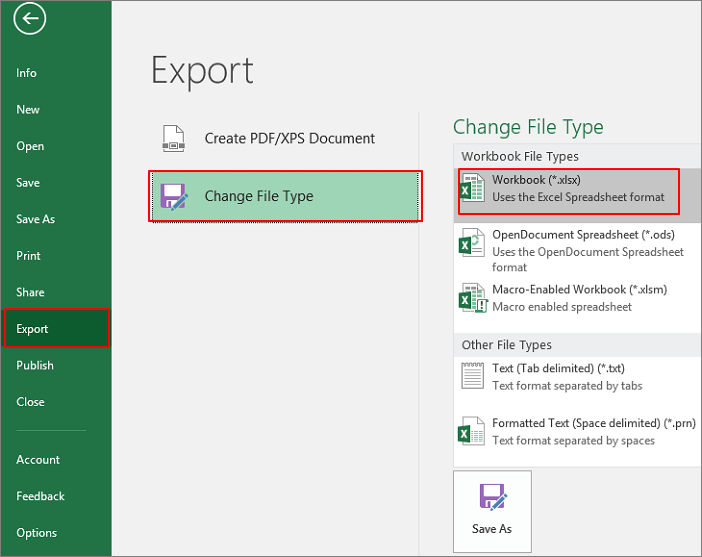
Fix 3. Get Permission to Access Excel Files
When you fail to access Excel files, that may be because you are not the administrator of these files. That means you don't have permission to read/write these files. We will show you how to change the file permission in Windows OS:
Step 1. Go to the target folder and find the Excel that the extension is not valid. Right-click the file and open the "Properties".
Step 2. Click the "Security" tab and choose "Edit".

Step 3. Select the account you are using and click "Add". Then, a new window opens, and click "Advanced".

Step 4. Click "Find Now", and you should click "Everyone" in the results. Then, click "OK".
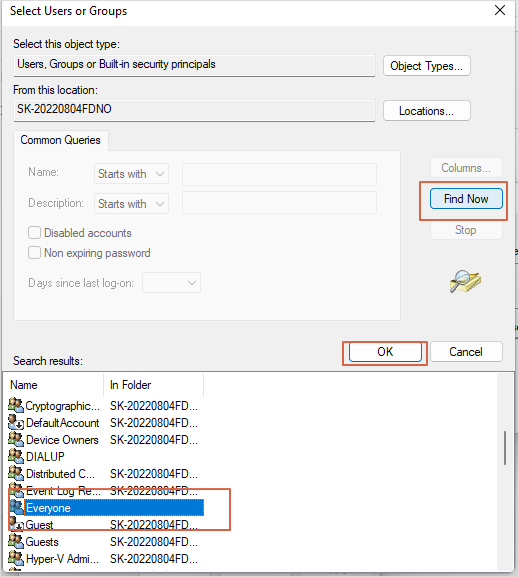
Step 5. Then, click "OK" again to return the permission window.
Step 6. Click the "Everyone" group and check every allow box below. Click "OK" to save the changes.

Fix 4. Open Excel File Using the Open and Repair Feature
The "Open and Repair" is a built-in easy-to-use MS Excel utility that allows you to correct the "Excel cannot open the file because the file format or file extension is not valid" error.
Step 1. Start Office Excel. On the File menu or the Microsoft Office button, click "Open".
Step 2. In the Open dialog box, click to select the inaccessible Excel file.
Step 3. Click the down arrow on the Open button, and then click "Open and Repair". Microsoft Office will then start to check the Excel document and repair problems or corruption it found.
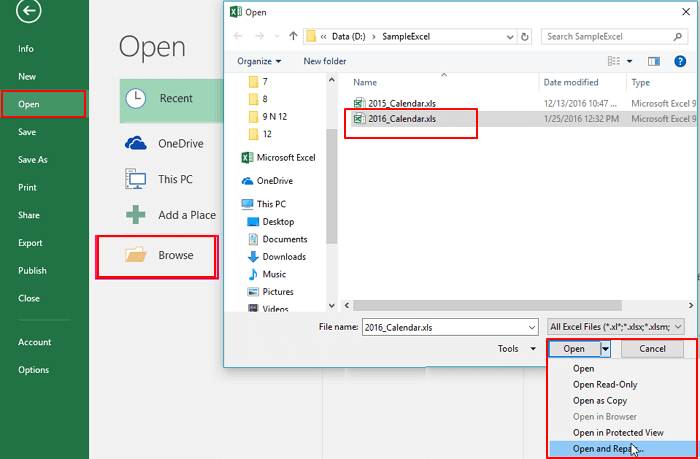
You can also read the following passage to open and repair Word documents:
10 Word Repair Fixes: How to Open and Repair Corrupt Word 2016/2019
Do you know how to troubleshoot a Word .doc or .docx file that will not open or unreadable issue? On this page, you will learn more. Read more >>
Fix 5. Use the Recover Unsaved Workbooks Option
If you are trying to open an unsaved Excel workbook, and this not-valid error suddenly appears, you can try to recover this unsaved Excel with Microsoft's built-in utility. This method is super simple but not that useful for everyone. Check the following tutorial to learn more:
Step 1. Open Microsoft Excel in Windows and click "File".
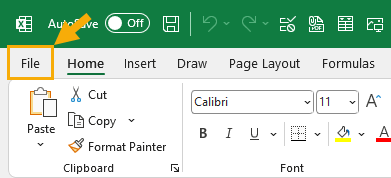
Step 2. Select the Info tab, and click "Manage Workbook" > "Recover Unsaved Workbooks". Then, you can recover any unsaved Excel files in the opening window.
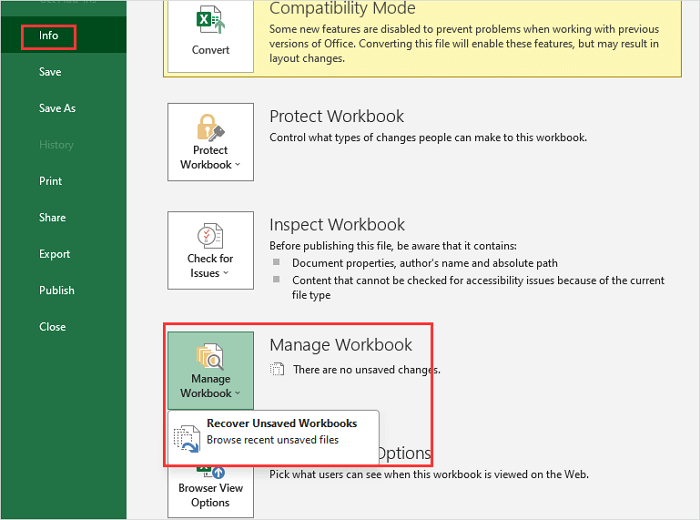
Several Windows users have proved the efficacy of these fixes. If one of the methods is helpful in resolving Excel cannot open the file because the file format or file extension is not valid issue, share it on Facebook, Twitter, Instagram, and other social media platforms!
Fix Excel Cannot Open the File Because the File Format or File Extension Is Not Valid on Mac [3 Fixes]
Some users have reported that they couldn't open Excel files on Mac. They also receive this error - Excel cannot open the file because the file format or extension is invalid. If you are faced with this error, you are unable to view or edit your Excel file. Follow the solutions below, and you can troubleshoot the Office problems and recover the Excel files cannot be opened on Mac.
Fix 1. Restart Excel on Mac
Step 1. Quit the Excel application: click "Excel > Quit Excel".
Step 2. Try to open your Excel file on Mac again.
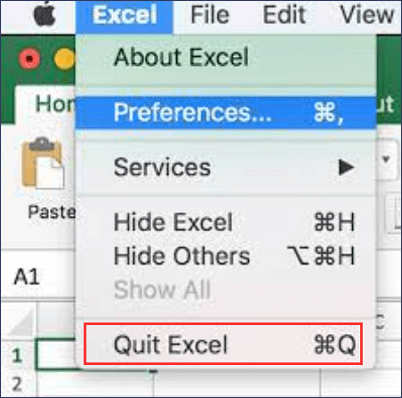
Fix 2. Restart Mac
Go to the "Apple menu > restart".
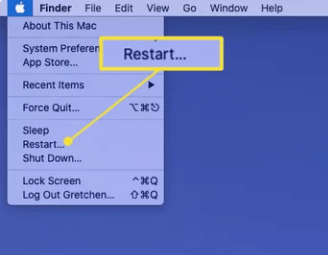
Fix 3. Change Excel File Format on Mac
Step 1. Click "File" from the menu bar.
Step 2. In the "Export To" pop-out menu, pick "Excel".
Step 3. To adjust the file format between XLSX and XLS, click "Advanced Options" and choose the one you want.
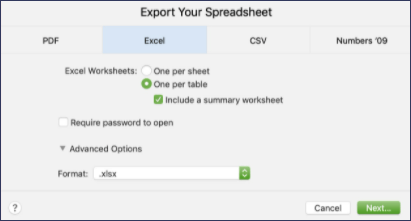
How to Recover Excel File When the File Format or File Extension Is Not Valid
If your unsaved Excel file cannot be opened because the file format or file extension is not valid, how would you recover excel file not saved? In this case, try the two ways below.
1. Restore Unsaved Excel Wordbook from Previous Versions
This method only restores lost files to a previous version. It means that you might lose some changes you may have made to the document.
Step 1. Right-click the inaccessible Excel file and choose "Properties".

Step 2. Open the "Previous Version" tab to list all the previously stored versions of the Excel file.
Step 3. Choose the most recent version and click "Restore" to retrieve the spreadsheet.
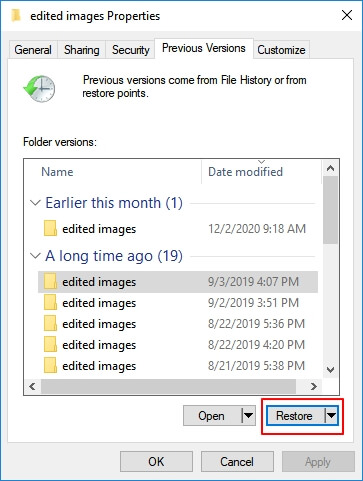
2. Restore Unsaved Excel File Using AutoRecover
This method only works if you have turned on the AutoSave feature in Microsoft Excel. It can fix the not valid issue and recover your unsaved files. This feature is also helpful for recovering unsaved Word documents.
Step 1. Open Office Excel and head into the "File" tab > click "Info".
Step 2. Besides Manage Versions, you'll see all autosaved versions of your file.
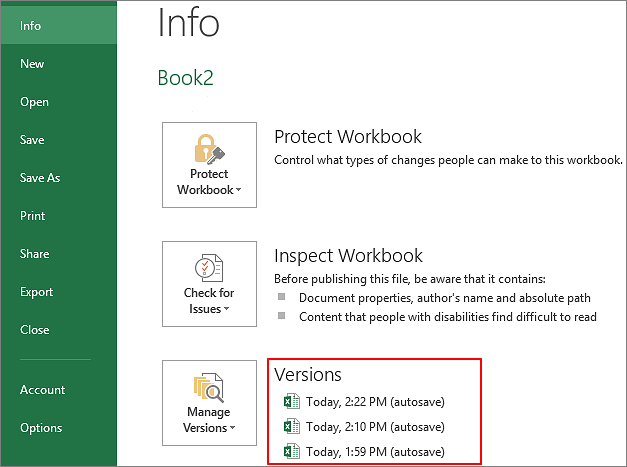
Step 3. Open the file in Excel and click "Restore".
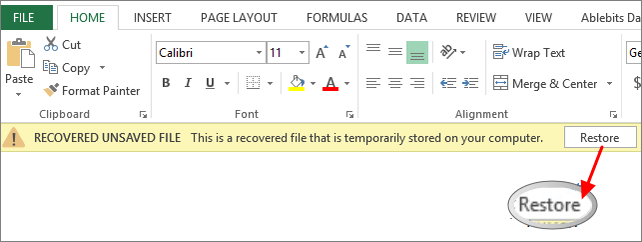
Step 4. Save the file with a new file name and set the extension as .xlsx.
Important Tips: How to Prevent Excel Files from Getting Loss
There are many ways to prevent data loss. If you have lost important Excel files due to accidental deletion, hard drive formatting, or virus attacks, you can use the EaseUS Data Recovery Wizard tool to retrieve lost data. Another crucial point to avoid data loss is backing up your Excel file on a regular basis.
1. Recover Deleted or Lost Excel Files with File Recovery Software
In addition to restoring unsaved Excel caused by Excel crashes when saving or other reasons, many users may want to recover lost Excel spreadsheets caused by accidental deletion, OS crash, hard drive damage/corruption, or lost partition. In these cases, you have to resort to a professional file recovery tool for help. And, EaseUS file recovery software is worth trying. It allows you to recover deleted DOC/DOCX, XLS/XLSX, PPT/PPTX, PDF, CWK, HTML/HTM, INDD, EPS, etc.
Give it a try to get your lost Excel back immediately:
Step 1. Select location and click "Scan"
Choose the drive or a specific folder on Desktop or somewhere else where you lost the excel files, and click the "Search for Lost Data" button.
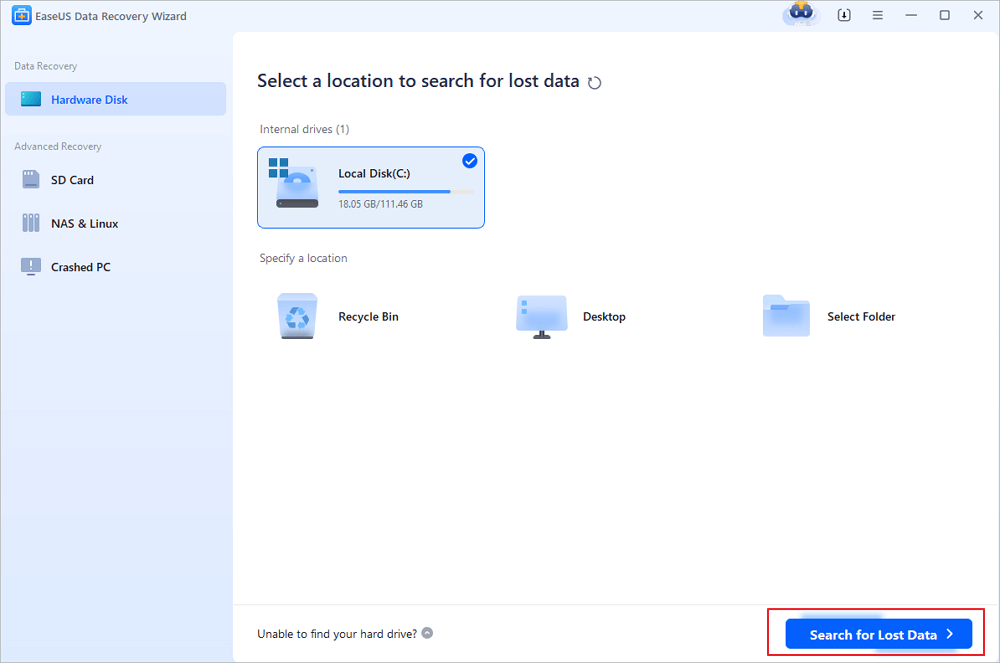
Step 2. Locate your excel files
To quickly find the Excel files from the scan results, click the "Documents" option in the left panel. Choose "xls" or "xlsx", and click "Preview" to check if the Excel files are the wanted ones.
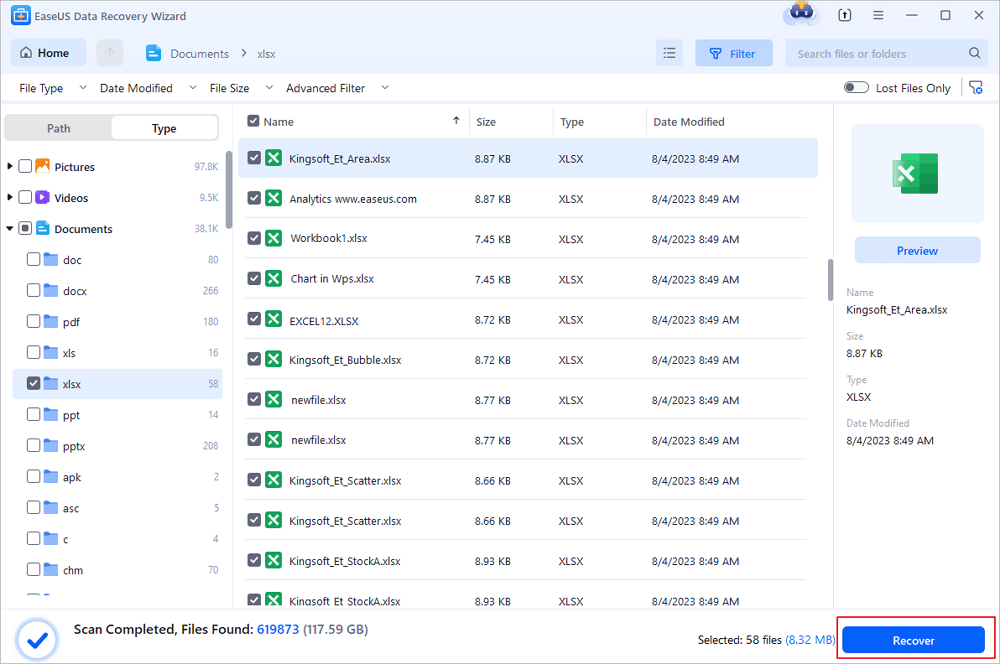
Step 3. Recover Excel files
Finally, select the desired Excel files and click the "Recover" button. Then, select a folder to save the Excel files to another location in your local drive or cloud storage.
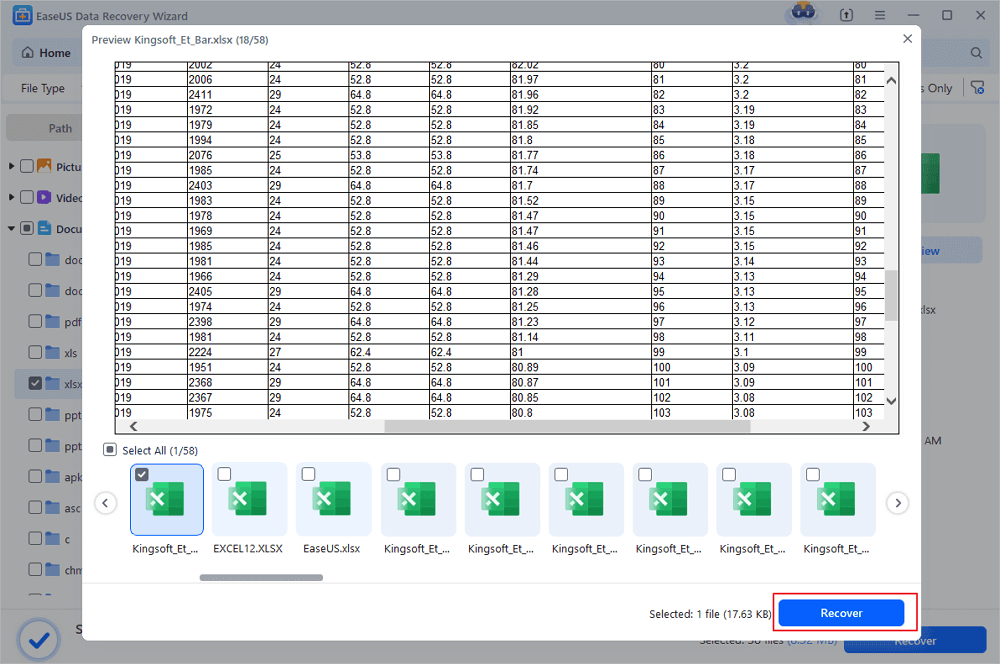
2. Back Up Excel File Automatically
If you modify and change your worksheet frequently, turning on the AutoSave feature is a good idea. Or, you can manually copy and backup your file to another safe location in case of an accident.
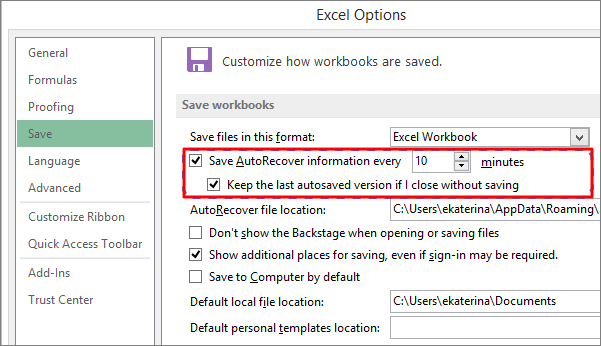
Final Words
"Excel cannot open the file '(filename)' .xlsx because the file format for file extension is not valid" is a normal error that you can face while opening an Excel file. With the help of the above methods, this error can easily be resolved without data loss.
If Excel cannot open the file problem is due to file corruption, the EaseUS Fixo Document Repair can help you fix and repair the Excel file with a few clicks pretty quickly. It is good at repairing photos, videos, documents, and other files on the hard drive, SD card, memory card, or any other storage medium. It's worth a shot.
Excel Cannot Open the File FAQs
The following four frequently asked questions are extremely relevant to the "Excel cannot open the file because the file format or file extension is not valid" error. You can find the methods here if you also have any of these problems.
1. How do you solve Excel cannot open the file because the file format or file extension is not valid?
You can try to fix the "Excel cannot open the file because the file format or file extension is not valid" error by changing the file extension:
Step 1. Open your Excel file. On the taskbar, select "File" and then choose "Options" > "Export" > "Change File Type".
Step 2. You can directly change the file extension depending on the version of Excel installed. Click "Save As". Then, check if the error "Excel cannot open the file" is resolved or not.
2. How do I recover an Excel file format or file extension that is not valid?
You can restore the Excel file format, or the file extension is not valid from previous versions.
Select the damaged file. Right-click it and click "Properties" > "Previous Version". A list of previous versions will appear; you need to select the option you are interested in and click "Restore" to recover. Previous versions come from File History or restore points.
3. What does file extension not valid mean?
"Excel cannot open the file '(filename)' .xlsx because the file format for file extension is not valid" is a common error that many users may encounter while opening a .xlsx file, especially when opening a spreadsheet received through an email. The possible reasons for this issue might be:
- The Excel file is corrupt or damaged.
- The Excel file is not compatible with the version of MS Excel you're using.
4. Why can't I open an XLSX file?
When the Excel file is corrupted, not compatible with the Excel version, infected by the virus, or received by email, these are the common causes of the "Excel cannot open the file because the file format or file extension is not valid" problem. If any of these problems appear, you can't open your XLSX file.
Was This Page Helpful?
Finley is interested in reading and writing articles about technical knowledge. Her articles mainly focus on file repair and data recovery.
Approved by Mahesh Makvana
Mahesh is an experienced computer tech writer. He's been writing tech how-to guides for about 8 years now and has covered many topics. He loves to teach people how they can get the most out of their devices.
Related Articles
-
How to Recover Deleted Worksheet in Excel
![author icon]() Tracy King/Dec 12, 2025
Tracy King/Dec 12, 2025 -
How to Extract and Restore Specific/Individual Files from Windows 11/10/8/7 Backups
![author icon]() Tracy King/Dec 12, 2025
Tracy King/Dec 12, 2025 -
Undo Changes in Excel After Save and Close in 4 Ways
![author icon]() Jaden/Dec 12, 2025
Jaden/Dec 12, 2025 -
[Fixed!] Exception Access Violation Error on Windows
![author icon]() Brithny/Dec 12, 2025
Brithny/Dec 12, 2025
